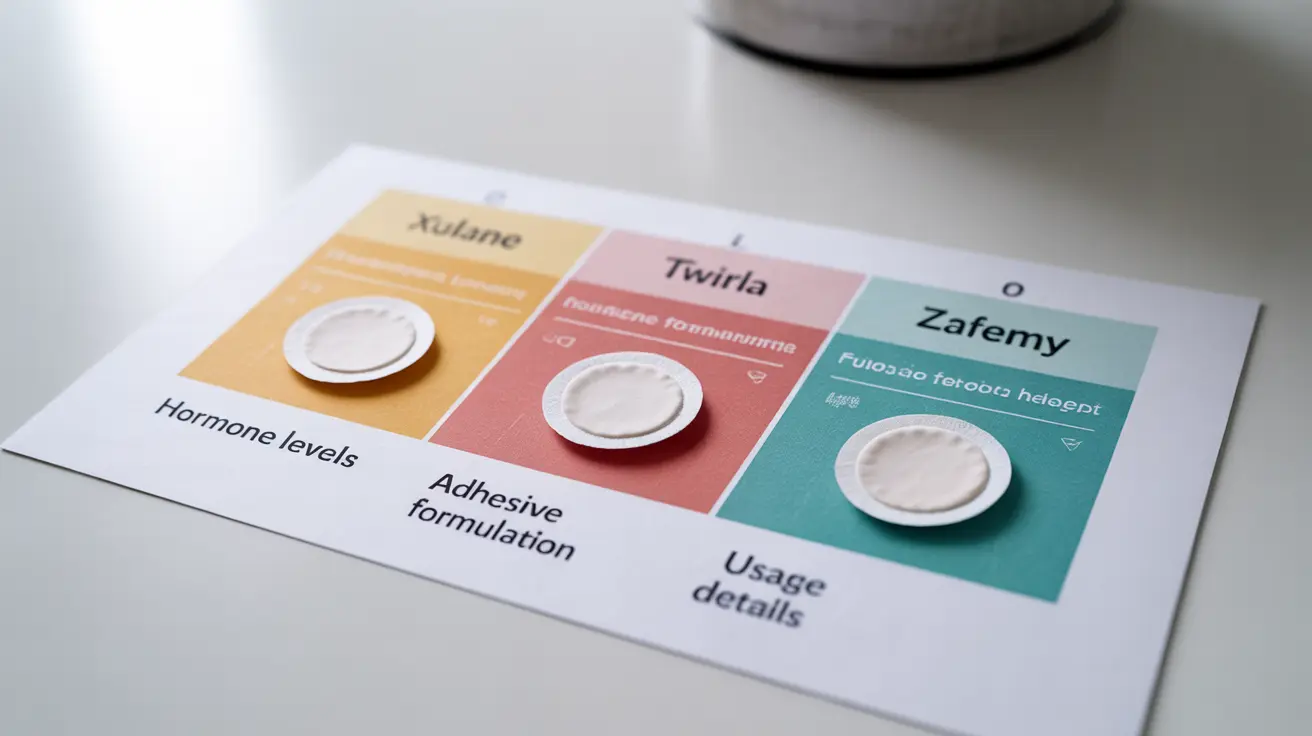Birth control patches offer a convenient and effective method of contraception for many women. Understanding the differences between available brands, their effectiveness, and potential side effects is crucial for making an informed decision about your reproductive health. This comprehensive guide explores the main birth control patch options available in the market today.
Understanding Birth Control Patch Basics
Birth control patches are thin, adhesive contraceptive devices that deliver hormones through your skin. They work similarly to birth control pills but offer the convenience of weekly rather than daily administration. Each patch contains estrogen and progestin, which prevent pregnancy by stopping ovulation and making cervical mucus thicker to prevent sperm from reaching an egg.
Available Birth Control Patch Brands
Xulane
Xulane is one of the most widely prescribed birth control patches in the United States. It contains norelgestromin and ethinyl estradiol, delivering a steady dose of hormones through the skin. This patch is beige in color and can be worn on the buttocks, lower abdomen, upper torso (excluding breasts), or outer upper arm.
Twirla
Twirla is a newer option that contains slightly lower hormone levels compared to other patches. It's specifically designed for women with a BMI less than 30 and features a different adhesive formulation that some users find more comfortable. The patch is light in color with a distinctive pattern that makes it easily identifiable.
Zafemy
Zafemy is a generic version of the original birth control patch. It contains the same active ingredients as Xulane and is similarly effective. This option often provides a more cost-effective choice for those seeking hormonal patch contraception.
Effectiveness and Proper Use
When used correctly, birth control patches are approximately 99% effective at preventing pregnancy. However, typical use effectiveness rates are around 91%, accounting for human error. To maximize effectiveness, patches should be changed weekly for three weeks, followed by a patch-free week during which menstruation typically occurs.
Common Side Effects and Safety Considerations
Like all hormonal contraceptives, birth control patches can cause various side effects, including:
- Skin irritation at the patch site
- Breast tenderness
- Headaches
- Nausea
- Mood changes
- Irregular bleeding or spotting
It's important to note that birth control patches may carry a slightly higher risk of blood clots compared to some birth control pills due to their method of hormone delivery.
Obtaining Birth Control Patches
Birth control patches require a prescription from a healthcare provider. They can be obtained through:
- Traditional doctor's offices
- Reproductive health clinics
- Telemedicine services
- Local pharmacies
- Online pharmacy services with valid prescriptions
Frequently Asked Questions
What are the main differences between birth control patch brands like Xulane, Twirla, and Zafemy?
The main differences lie in their hormone levels, adhesive formulations, and design. Twirla contains slightly lower hormone levels and is specifically approved for women with BMI under 30. Xulane and Zafemy contain identical hormones but may differ in cost and availability.
How effective are birth control patches at preventing pregnancy compared to other methods?
Birth control patches are 99% effective with perfect use and about 91% effective with typical use, making them comparable to birth control pills in effectiveness. They're more effective than barrier methods like condoms but slightly less effective than long-acting reversible contraceptives like IUDs.
Where can I get a prescription for birth control patches, and are all brands available online?
Prescriptions can be obtained from healthcare providers, clinics, or telemedicine services. While all brands can be prescribed online, availability may vary by pharmacy and location. Some online pharmacies may not carry all brands.
What are the common side effects and risks associated with using birth control patches?
Common side effects include skin irritation, breast tenderness, headaches, and nausea. The patches carry a slightly higher risk of blood clots compared to some birth control pills. Users should discuss their medical history with their healthcare provider to assess individual risks.
How do I choose the best birth control patch brand based on my health needs and hormone sensitivities?
The best choice depends on factors including your BMI, sensitivity to hormones, medical history, and cost considerations. Discuss your lifestyle, health history, and any concerns with your healthcare provider to determine the most suitable option for you.




